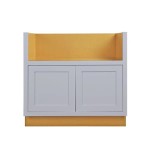German Farmhouse Architecture: A Timeless Expression of Heritage and Functionality
German farmhouse architecture, with its distinctive features and rich history, continues to captivate and inspire both architects and homeowners alike. These structures embody a harmonious blend of practicality, aesthetics, and a deep connection to the surrounding landscape.
Origins and Evolution: German farmhouse architecture evolved from humble beginnings in the Middle Ages. Early farmhouses were simple, single-story structures made primarily of wood and thatch. As the centuries passed, these houses grew larger and more elaborate, incorporating stone and brick construction, and evolving with changing economic and social conditions.
Regional Variations: German farmhouse architecture varies greatly from region to region, reflecting local building materials and cultural influences. For instance, the Black Forest region is known for its intricately carved timber houses, while the flatlands of northern Germany feature brick and half-timbered structures.
Common Architectural Features: Despite regional variations, certain architectural features are common to most German farmhouses. These include:
- Large, central entrance: The grand entrance often features a heavy wooden door or gate, leading into a spacious entryway.
- Steep, pitched roof: The steeply sloped roofs, typically covered with clay tiles or thatch, shed rain and snow effectively.
- Half-timbered construction: This traditional building technique involves exposing the wooden beams that form the house's framework, creating a decorative effect of alternating light and dark timber.
Functionality and Living Spaces: German farmhouses were designed primarily for functionality. The ground floor typically housed the kitchen, living and dining areas, and animal stables. The upper floors were used as bedrooms and storage space.
Connection to the Landscape: German farmhouses are often sited strategically to take advantage of natural resources such as water, sunlight, and shelter from prevailing winds. They also feature courtyards and gardens, creating a strong connection between the house and the surrounding environment.
Preservation and Modern Adaptations: In recent decades, there has been a growing interest in preserving and restoring historic German farmhouses. Architects and homeowners seek to balance modern comforts and amenities with the preservation of these historic structures. Some farmhouses have been converted into charming bed and breakfasts, event spaces, or private residences.
Inspiration for Contemporary Design: German farmhouse architecture continues to inspire contemporary home design. Its timeless elements, such as the pitched roof, exposed beams, and large windows, are incorporated into modern homes, creating a sense of warmth, character, and connection to the natural world.

German Vernacular Architecture

German Farmhouse I Portfolio Olson Defendorf Custom Homes

German Farmhouse I Portfolio Olson Defendorf Custom Homes

Low German House Wikipedia

Houzz Tour German Tradition Deep In The Heart Of

German Farmhouse 2 Geschke Modern Exterior Architecture

German Farmhouse Belvedere Parade Geschke Residential Architecture House Hill Country Homes

German Vernacular Architecture

Gutshof Güldenhof Is An Arts Hub In A German Farmhouse Wallpaper

Lemburg House German Farm Restoration








